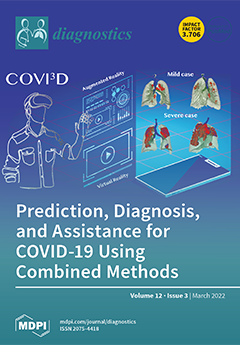This study aims to investigate differences in the mean corneal power of annular zones (corneal power measured over the inner annular zone of difference diameters) and rings (corneal power measured over a ring of different diameters) centered on the corneal apex using the swept-source optical coherence tomography technique. The mean anterior axial curvature (AAC), posterior axial curvature (PAC), and total corneal power (TCP) centered on the corneal apex with the annular rings (0–2 mm, 2–4 mm, 4–6 mm, and 6–8 mm) and zones were assessed using the ANTERION device. The paired-sample
t-test was used for data comparison. For the 0–2 mm comparison, the AAC, PAC, and TCP values of rings and zones were interchangeable. For the 2–4 mm comparison, the AAC of the rings was lower than that of the zones (
p = 0.004), and the TCP values of the rings were higher than that of the zones (
p < 0.001). For the 4–6 mm comparison, the AAC of the rings was lower than that of the zones (
p < 0.001), and the PAC and TCP values of the rings were higher than that of the zones (both
p < 0.001). For the 6–8 mm comparison, the AAC of the rings was lower than that of the zones (
p < 0.001), and the PAC and TCP values of the rings were higher than that of the zones (both
p < 0.001). Comparisons between AAC and TCP in each sub-region showed significant differences both in the rings (
p < 0.001) and the zones (
p < 0.008). Differences in the AAC, PAC, and TCP measured at different diameters (2–4 mm, 4–6 mm, and 6–8 mm) of the rings and zones, centered on the corneal apex, should be noticed in clinical practice. As the diameter increases, the difference between the rings and the zones in terms of AAC, PAC, and TCP increase as well. Clinicians should also pay attention to differences between AAC and TCP for the rings and the zones within the same annular region.
Full article






